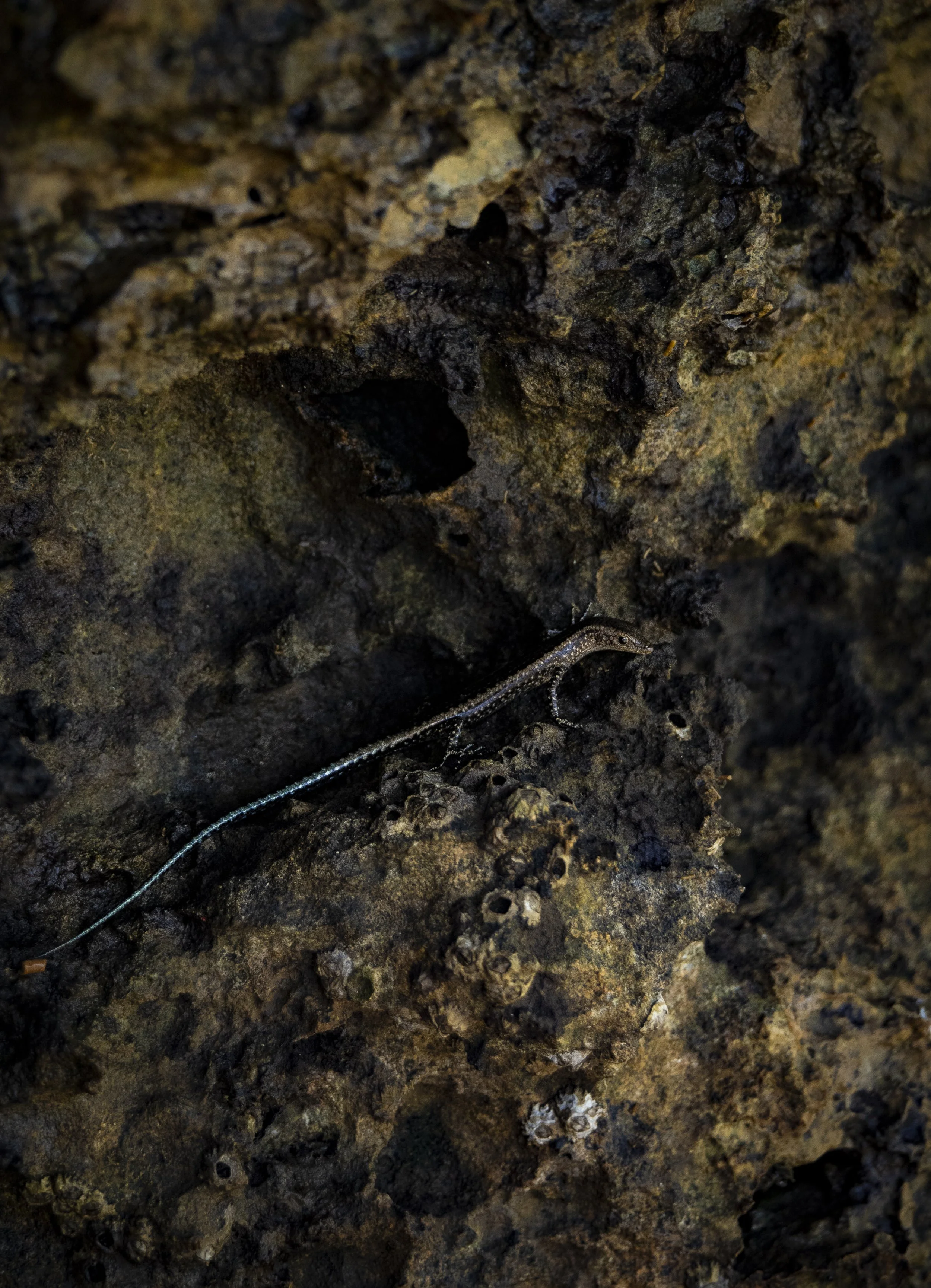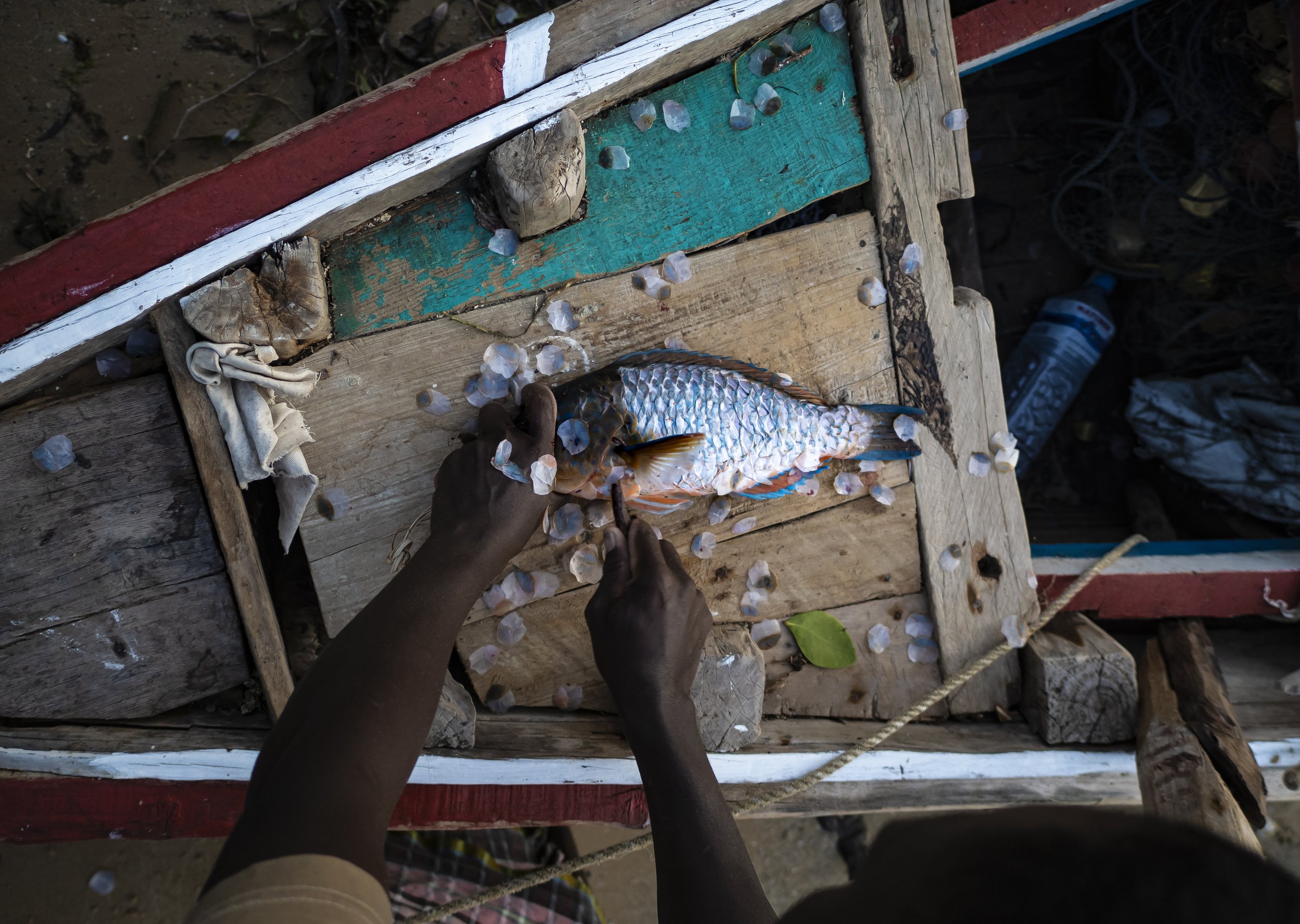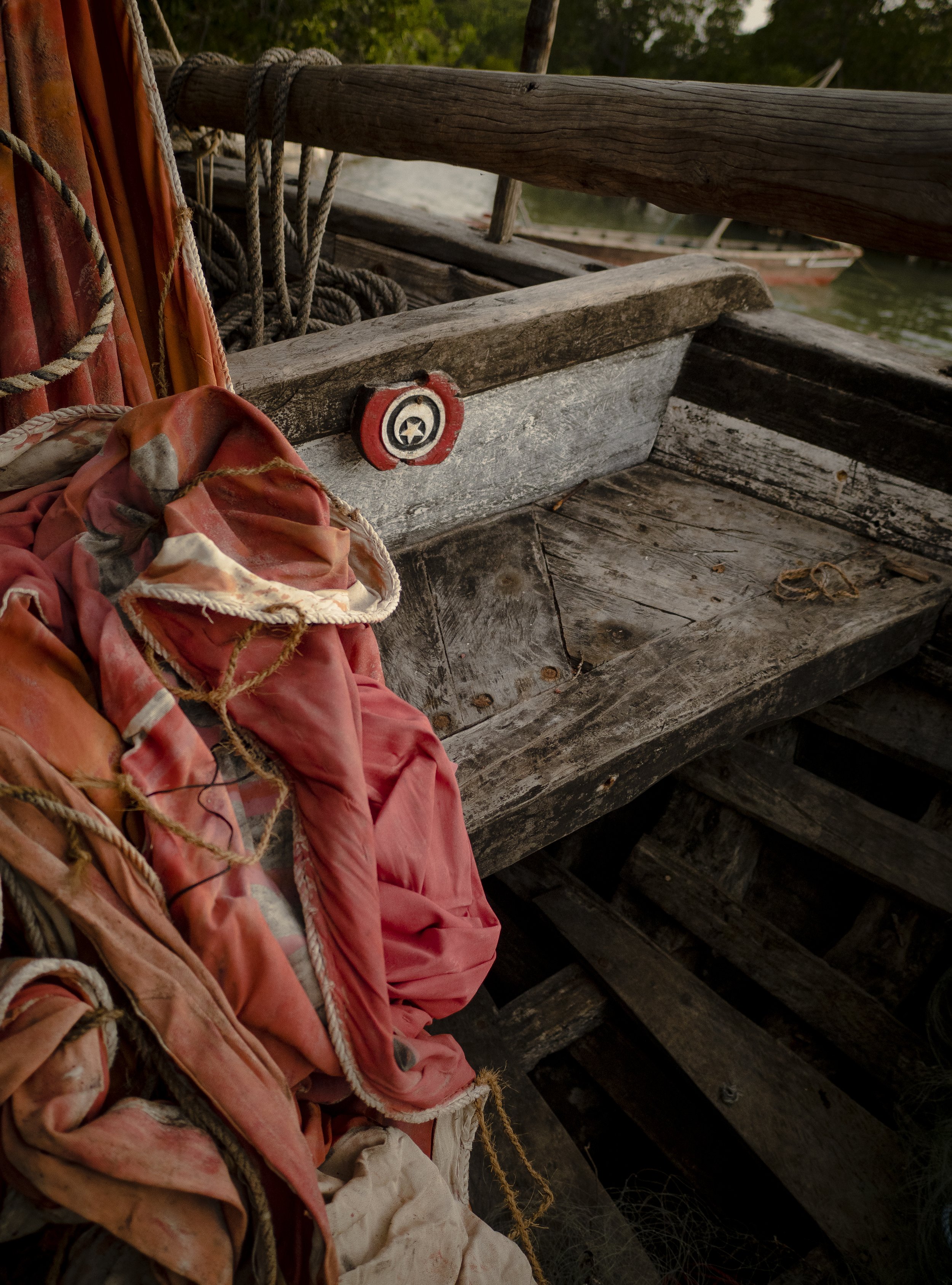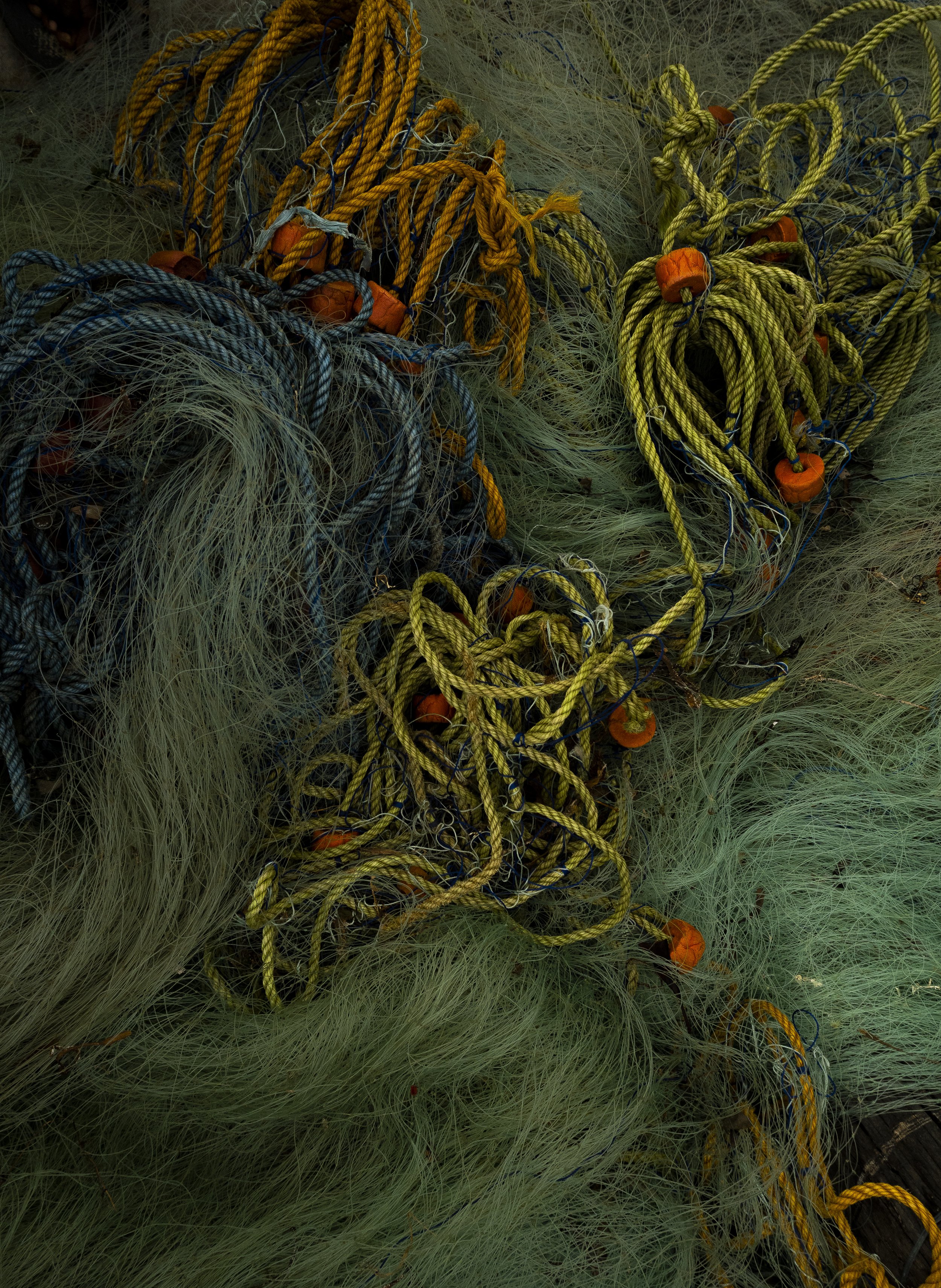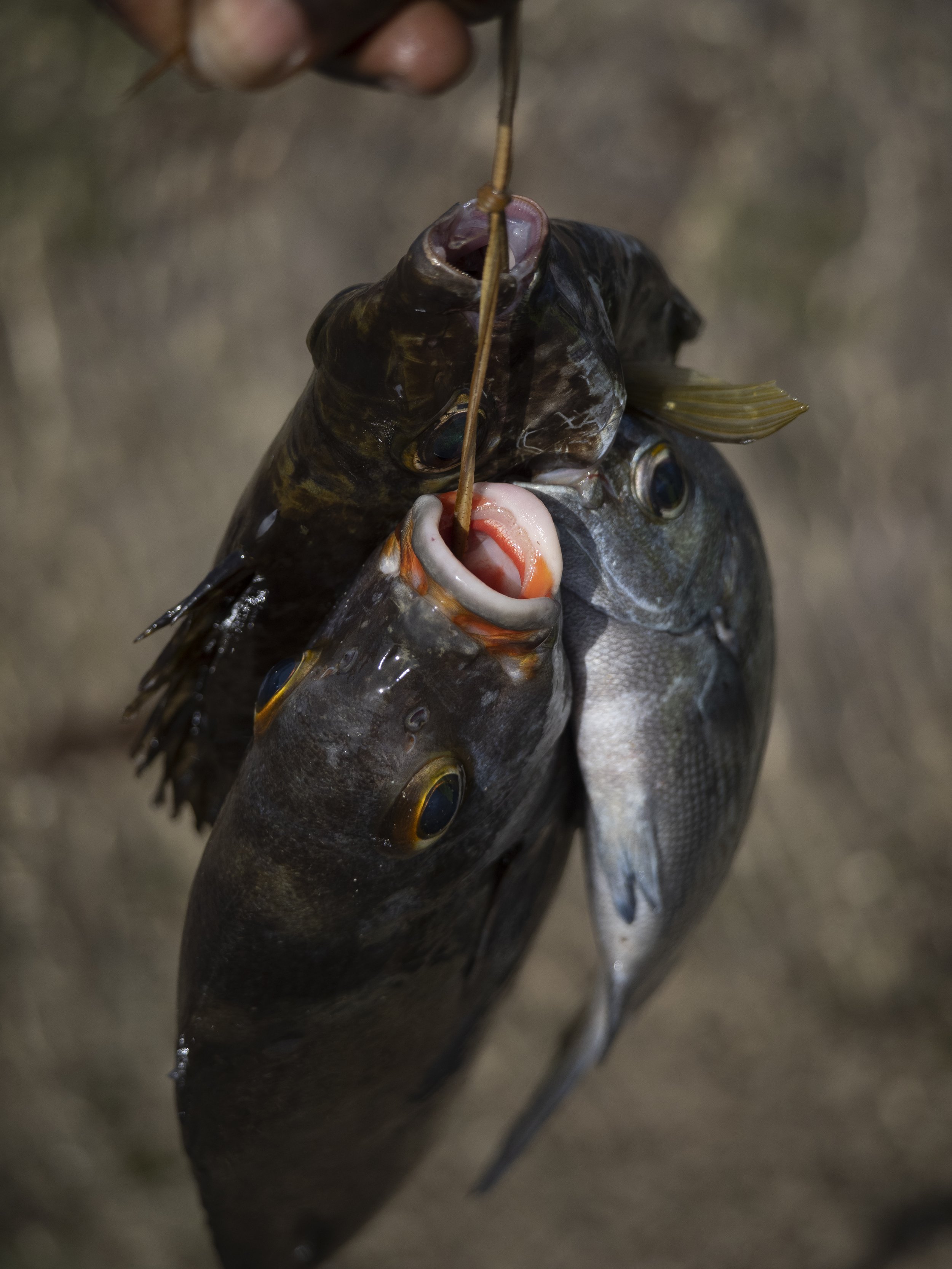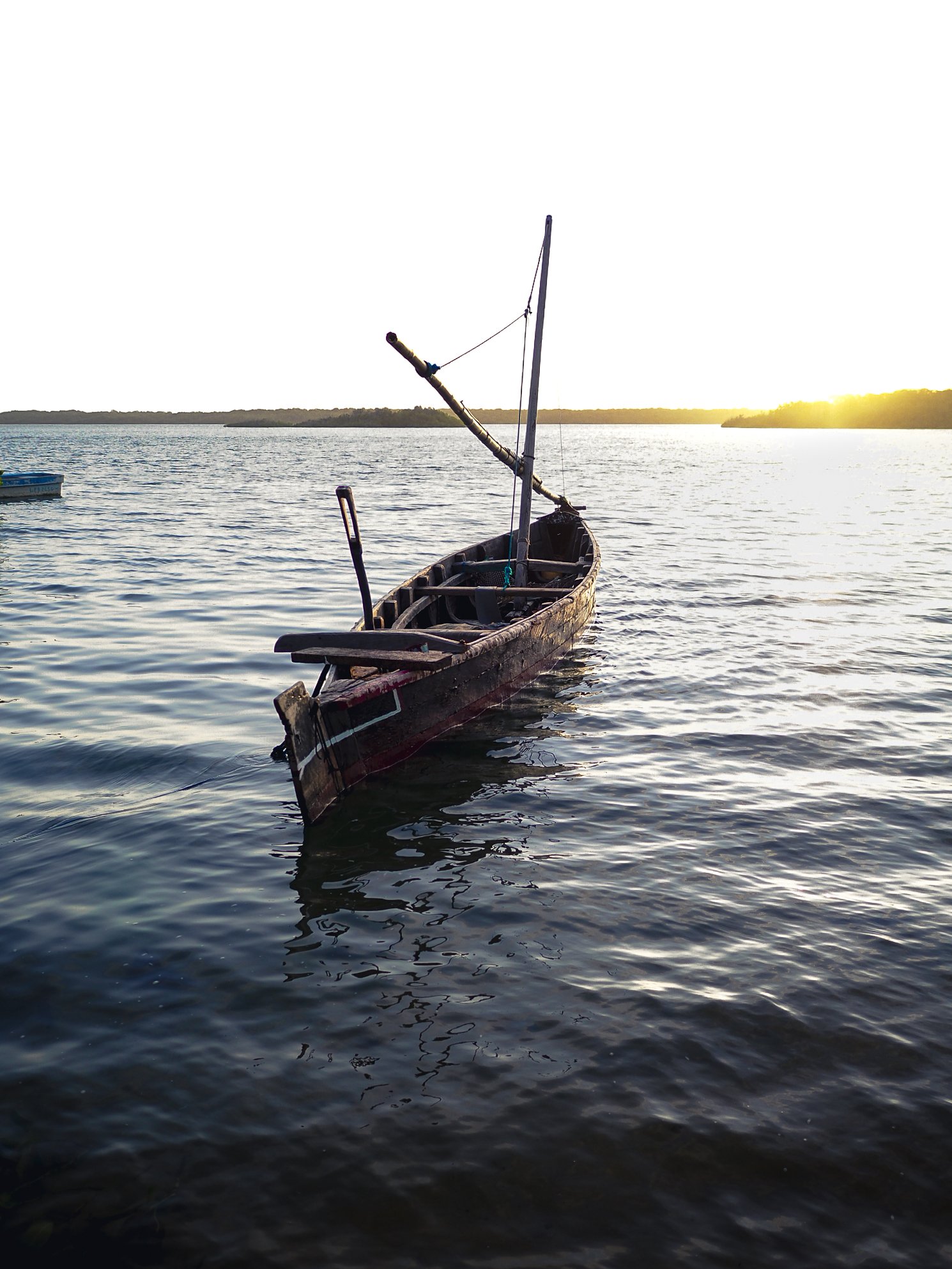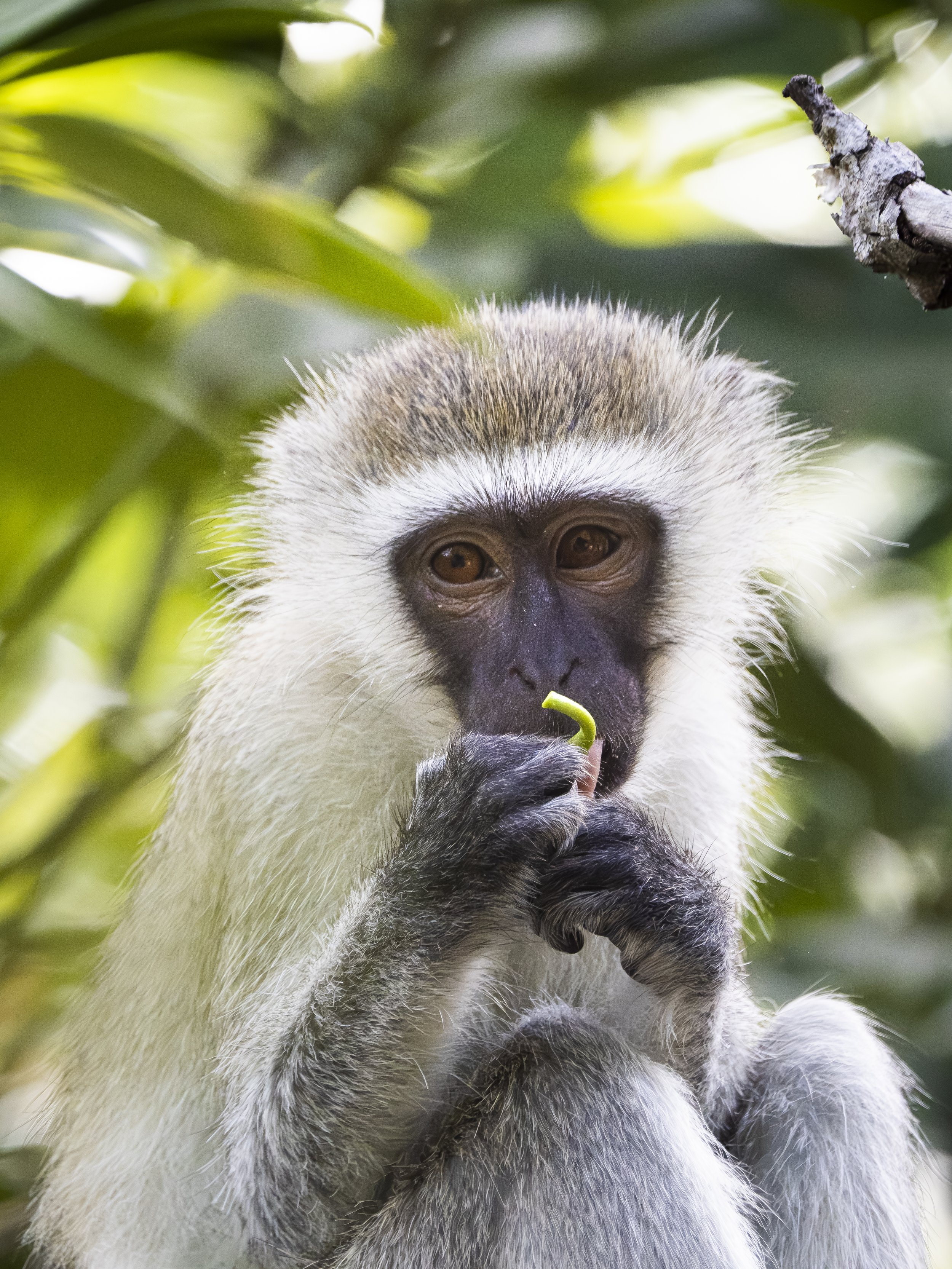Intertidal Zone
A photo series by Alex J. Chege
For tens of thousands of years, humans have maintained a long relationship with coastal environments. Fishing, one of the oldest human practices, has enabled humans to exploit the ocean for its bountiful resources. However, both humans and primates, some of our closest living relatives, have managed to continuously thrive in this space.
Drawing inspiration from these immersive scenes while doing field research on and near the intertidal habitats of Kiwayu Island nested within the Lamu archipelago, this photo series, Intertidal Zone, is my attempt at showing the intersection of the marine and terrestrial realms. Set against the backdrop of Lamu’s breathtaking marine diversity this collection features the livelihoods of the communities that depend on the ocean and the coastal primates that also thrive at this ephemeral intersection between land and sea.
Much like the communities of marine crabs that become exposed by each tidal recession, this series only scratches the surface of this complex system. From the gentle swish of the ebbing tide to the torrential waves crashing on the coral’s surface, the intertidal zone is teaming with life and energy.
This work was supported by The Safina Center
A brown land crab (Cardisoma carnifex) found strolling along on the coral as the tide receded. I only ever saw one of these eye-catching beauties despite their widespread distribution across the seashores of Eastern Africa and the Indo-Pacific.
Subverting even my own expectations of the forms of life I would see in the intertidal zone was this East-African Snake-eyed Skink (Cryptoblepharus africanus). We often saw many of these skulking in the cracks of coral rock surfaces. The skink's bright blue tail is used as a defense mechanism to distract predators. This species is yet to be studied in greater detail.
A cautious pleated rock crab (Pachygrapsus plicatus) cowers in a burrow, it’s amazing to see hundreds of crabs out on the coral before they retreat as humans draw closer.
Shells and their residents latch on during low tide exposure.
My friend Yunus, last featured two years ago in my first Lamu photo series, uses a dhow as a workbench while giving a twilight demonstration of how to descale a parrotfish when you find yourself in a situation with no tools around.
Kizingitini lobster trappers engaged in conversation as they make their way back from Shimo la Tewa, the southernmost tip of Kiwayu’s barriers islands. Kiwayu’s diverse marine life draws fishermen from many of the surrounding islands and settlements including Ndau, Kizingitini, and Faza.
The symbol of Lamu, a star above a crescent moon, represents Lamu's heritage showing both the maritime and Islamic histories of the Swahili archipelago. Also known as the Eye of the Dhow, this symbol originated as a representation of protection and navigation for sailors of the Indian Ocean since the moon and stars were used to guide voyages by sea. This ornament continues to be adorned on dhows (sailing boats) with the three colours being a unique characteristic of this symbol of identity.
The use of plastic fishing nets is slowly being phased out in Lamu. Thanks to the efforts of many conservation initiatives in the region, these communities will contribute less to plastic pollution.
Kiwayu fishermen sorting and loading their fishing nets for the next day's work.
The surf at Shimo La Tewa. This area is entirely exposed to the monsoonal waves of the Western Indian Ocean making it a refuge for intertidal marine life. Fishermen and one resident troop of vervets, Shimo, that makes use of the surf to locate marine foods.
It is too dangerous for fishermen to go out to sea during the monsoon season, many fishermen therefore brave the shallow intertidal in search of a catch. The upwelling surf brings numerous deep-sea fish close to Kiwayu’s waters, fishermen (pictured) discuss how to navigate the coral by foot to exploit this intertidal period.
A good strategy leads to a successful catch at the fishermen (previously pictured) organize their morning's effort.
The best thing about doing field research on an island is that you frequently encounter fishermen while out searching for and observing the vervet monkeys. This was one of many instances where we went home with a bundle of fish bought from fishermen active on the intertidal coral.
Afternoon activities. Kiwayu fishermen sort their nets during the late hours of the day.
Because of its separation from the mainland, Kiwayu is one of few places on Kenya's east-facing coastline where one can watch the sun rise and set above the ocean.
My first shark encounter in Lamu was an early morning longline catch of Blacktip reef sharks (Carcharhinus melanopterus) on the beach at Shimo La Tewa. These are some of the largest carnivores caught by maritime fishermen. Blacktip reef sharks are viviparous meaning that their offspring develop as embryos inside pregnant females that give birth to litters of up to 5 offspring. One of many shark species found in and around Lamu.
A pink ghost crab (Ocypode rhyderi) stares down the lens as it takes shelter during the low tide.
Peaceful early mornings as a sailor punts his boat along Kiwayu’s shores during the high tide.
Conflict with passing humans and dogs makes vervets very fearful of encroaching humans. Vervets do recognize people making them easier to observe and get closer to while studying their natural behaviour.
A vervet monkey (Chlorocebus pygerythrus) feeds on mangrove flowers during low tide (not pictured), the rainy season brings a multitude of food items for vervets (and humans) to choose from.
Young vervet monkeys are ever curious and unlike the adults venture closer to us researchers, perhaps wondering what we're up to, but more importantly, if we brought some food.
One of the most fun and challenging aspects of my field work is making the transition between hiking in the forest, or along the beach, to walking on coral, and sometimes wading in rising tide water with my binoculars and notebook raised above my head.
The resident troop of vervets on the southern side of Kiwayu, Shimo, forages for crabs during the morning high tide. This southern group regularly searches for crabs in this productive and diverse area of the island.
Lamu fishermen take shelter underneath a coral overhang during a light morning shower. Scenes like this are awfully common during the monsoon season when the weather and the ocean waves begin to stir.
Still rocking of boats docking on Kiwayu's shores.
Ndau fishermen make the high tide voyage from Kiwayu to Kizingitini across one of the greater channels in the Lamu archipelago.
The long and beautiful beach that stretches across the eastern side of Kiwayu island. If you look closely you can see numerous pink ghost crabs peppering the edges of ocean tide.
A colony of pink ghost crabs (Ocypode rhyderi) forage on red snapper washed up on Kiwayu's shores.


